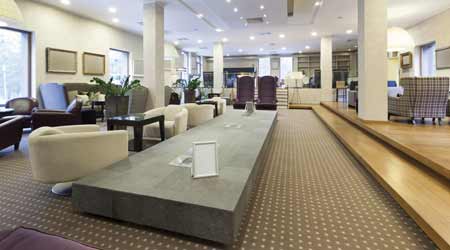 Control technology advances provide expanded capabilities, including the ability to tune a light source’s color output and to program the system’s responsiveness and behavior.
Control technology advances provide expanded capabilities, including the ability to tune a light source’s color output and to program the system’s responsiveness and behavior.How Lighting Controls Reduce Energy Use
Advances in lighting control technology give managers expanded options and opportunities.
Lighting controls can reduce lighting energy use in institutional and commercial facilities by up to 47 percent, depending on the selected strategy. The ideal time to install controls in existing buildings is during an upgrade to LED technology.
The challenge for maintenance and engineering managers is to develop plans and select products in ways that ensure the project delivers results in terms of savings and performance.
A closer look
Lighting controls either switch or dim connected loads in response to manual or automatic inputs. The combination of inputs and outputs define lighting control strategies:
• occupancy sensing — lights change in response to occupancy
• scheduling —set time
• daylight response — light level
• institutional task tuning — maximum light level
• plug load control — automatic off for selected receptacles
• manual control — user initiative.
The advent of LED technology and digitalization of lighting control also has led to new control capabilities — the ability to tune a light source’s color output, program the responsiveness and behavior of the control system, collect data on energy and space use, and monitor itself for problems.
Most LED luminaires incorporate dimming without the cost premium associated with traditional fluorescent lighting, providing flexibility as a standard feature or standard option. This flexibility can make an important difference in terms of energy savings, as well as mood and visual comfort.
In short, lighting controls facilitate good lighting and save energy by producing the right amount and quality of light where and when needed, and they give managers information about the way lighting is used.
If upgrading with LEDs, managers should consider lighting controls as part of the proposed lighting options to optimize energy savings and performance. They should consider the way the given lighting options interact with proposed or legacy controls, and if upgrading with controls, they also should consider options in relation to the characteristics of the space.
Related Topics:














